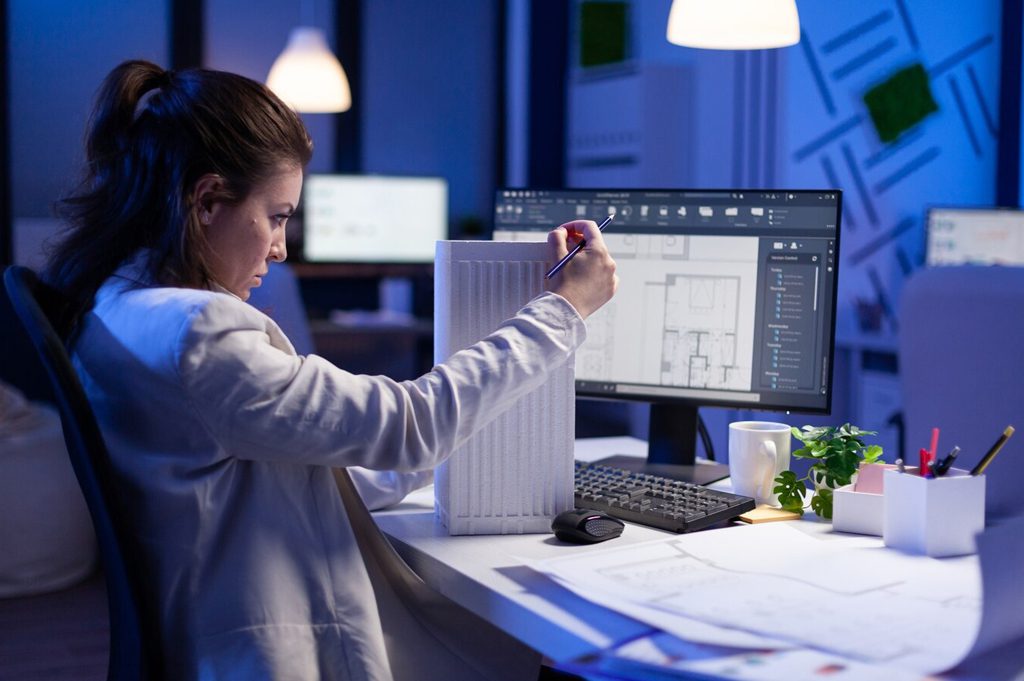
The future of architectural visualization tools holds exciting possibilities driven by advancements in technology and changing industry demands. Here are some key trends that are shaping the future of these tools:
Real-time Rendering:
Real-time rendering technologies allow architects and designers to see their designs come to life instantly, enabling quicker iterations and more interactive presentations. With the ongoing development of hardware and software capabilities, real-time rendering will become even more sophisticated, offering higher quality visuals and seamless interactivity.
Virtual Reality (VR) and Augmented Reality (AR)
VR and AR are revolutionizing architectural visualization by providing immersive experiences for both designers and clients. Architects can walk through their designs at full scale, while clients can explore proposed spaces before construction begins. As VR and AR hardware becomes more accessible and affordable, their integration into architectural workflows will become more commonplace.
Artificial Intelligence (AI):
AI-powered tools are streamlining the architectural design process by automating repetitive tasks and generating design alternatives. AI algorithms can analyze vast amounts of data to optimize building performance, energy efficiency, and user experience. Additionally, AI can assist in generating realistic renderings and simulations, saving time and enhancing the quality of visualizations.
Generative Design:
Generative design algorithms use parameters and constraints to explore countless design possibilities and identify optimal solutions. These tools empower architects to quickly generate and evaluate design options based on various criteria such as aesthetics, functionality, and sustainability. As generative design algorithms become more sophisticated, they will play a crucial role in the early stages of architectural projects.
Cloud-based Collaboration:
Cloud-based platforms are transforming how architectural teams collaborate and share data. By centralizing project information in the cloud, architects, clients, and stakeholders can access and review designs from anywhere in the world in real time. This facilitates seamless communication and coordination throughout the design and construction process, leading to greater efficiency and fewer errors.
Photorealistic Simulations:
Advances in rendering technology are enabling the creation of highly realistic simulations that accurately depict lighting, materials, and environmental conditions. These photorealistic visualizations provide clients and decision-makers with a clear understanding of how a design will look and function in its intended context, helping to facilitate informed decision-making and approvals.
Integration with Building Information Modeling (BIM):
Architectural visualization tools are increasingly being integrated with BIM software, allowing for a more holistic approach to design and construction. By combining visualization with detailed building information, architects can create more accurate representations of their designs and identify potential conflicts or issues early in the process.
Cross-disciplinary Integration:
Architectural visualization tools will increasingly integrate with software used in related disciplines such as engineering, construction management, and urban planning. This integration will facilitate seamless data exchange and collaboration across different stages of the building lifecycle
Mobile Applications:
Mobile applications tailored for architectural visualization will become more sophisticated, allowing architects to create, view, and share designs on-the-go using smartphones and tablets. These apps may leverage AR technology to overlay virtual designs onto real-world environments for on-site visualization.
Overall, the future of architectural visualization tools is characterized by increased realism, interactivity, and efficiency, driven by advancements in technology and a growing demand for more immersive and collaborative design experiences.

















